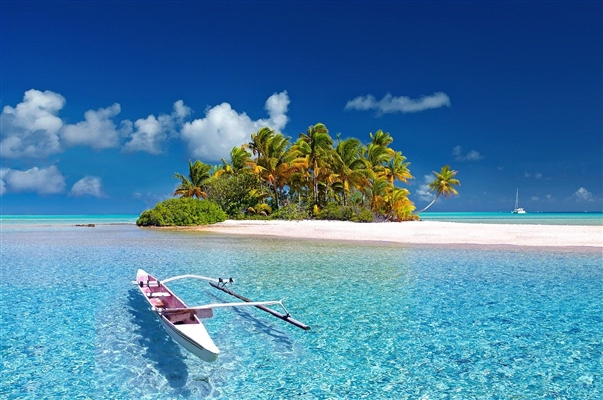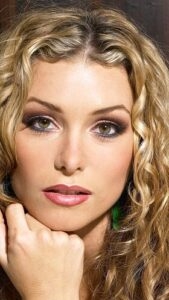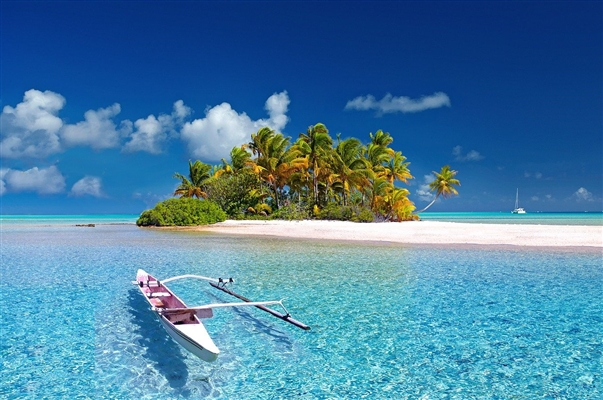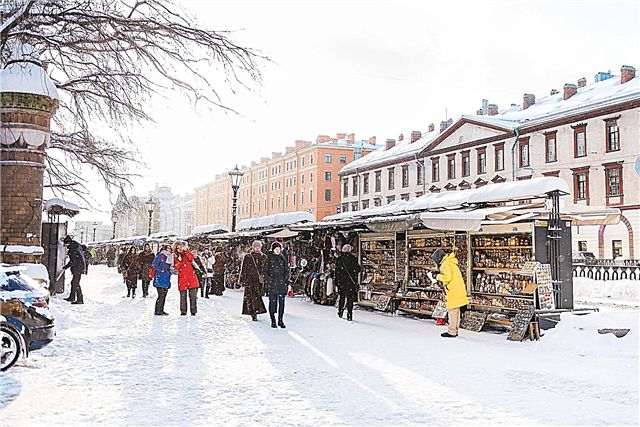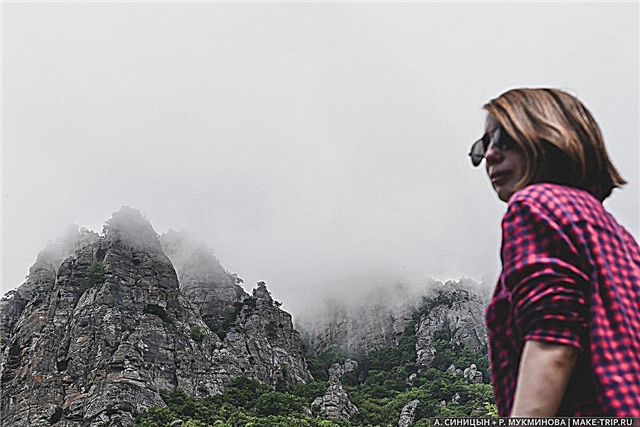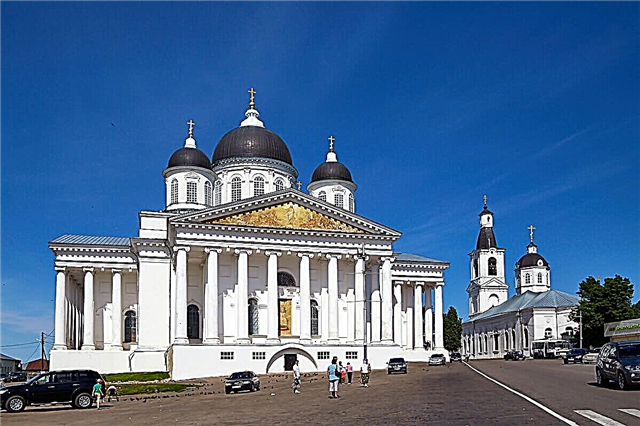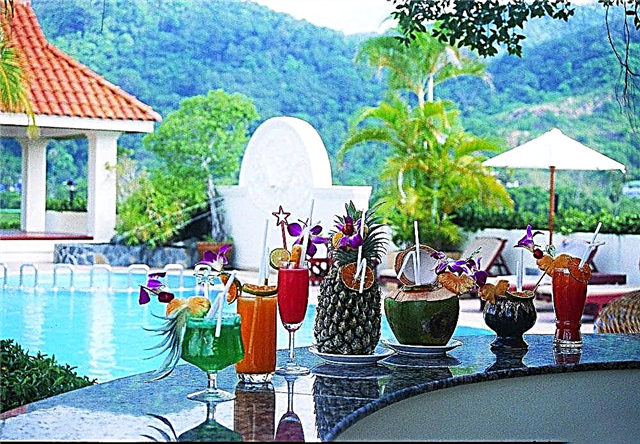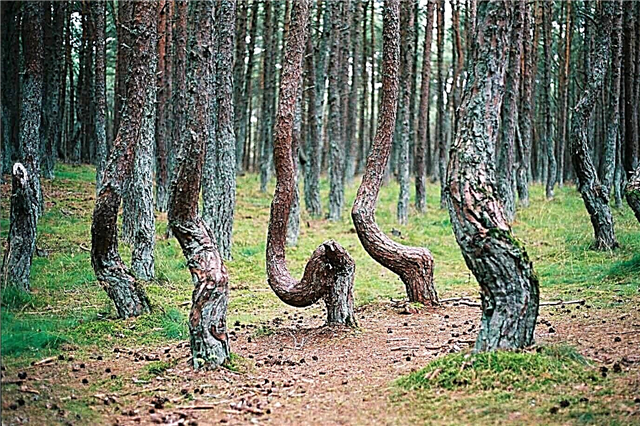The Curonian Spit is the main pearl of the Kaliningrad region. This is the largest sand mound on the planet. Here the sea, pine forests, sand dunes, vast lichen fields, flood meadows are harmoniously combined. The national park created on the basis of the spit attracts tourists from all over the world every year.
Pedestrian routes with signs, maps, information boards have been developed for visitors. All of them pass through the main natural objects of the Curonian Spit - unforested dunes, century-old coniferous forests, a forest area with "dancing" trees, Lake Swan, etc. audio guide.
What to see on the Curonian Spit?
List, photos with names and descriptions of the most popular and beautiful places!
Visiting Center "Museum Complex"
Located in the Forest village. Introduces to the diversity of flora and fauna, the history of forestry and fishing, the stages of the settlement of the spit. It includes a Viking Village, an arboretum, an enclosure with animals, a Museum of Russian Superstitions, an interactive Trail of Sensations, a fabulous children's town, an observation deck, permanent exhibitions of local history and nature conservation. By boat from the visitor center, you can take a walk along the bay.

Dancing forest
A unique natural site. A piece of coniferous forest 1 km long with bizarrely curved, twisted, tree trunks growing at different angles. This unusual phenomenon still does not have a single scientific explanation. Among the many versions - the impact of viruses, the external environment, geomagnetic activity, insect pests, genetic changes, etc. A popular eco-trail passes through the Dancing Forest.

Ornithological station "Fringilla"
Located near the village of Rybachy. He is engaged in the study of the migratory routes of birds, their registration and ringing. The founder of the world's first ornithological station at the beginning of the last century was Johannes Thinemann. After the war, the station was abandoned. It resumed its work in 1956. On its territory there are special traps for catching birds. Today, 2/3 of birds in Russia are ringed here. Scientists-ornithologists conduct entertaining excursions.

Efa height
One of the largest dunes in Europe, Orekhovaya, is located in the vicinity of the Morskoye village. Its 60-meter summit bears the name of the German forester Franz Ef, who developed a successful planting method for anchoring nomadic dunes. As a result, dozens of residential buildings were saved from the inevitable falling asleep with sand. A special hiking trail is laid along the wooden decks to the top of the dune, to two observation platforms.

Müller height
This is the name of the highest point of the Swamp Dune near the village of Rybachiy. Müller is a German forester. In the 19th century, he developed a new method of planting forests, thereby securing the moving sands and securing the nearby village. A popular tourist route with a length of 2 km runs along the slope of the dune. It starts on level ground, and then rises sharply up a wooden staircase. At the end of the route there is an observation deck.

Royal Bor
Since the 16th century, the virgin forests of the spit have attracted not only noble hunters, but also poachers. Therefore, by royal decree, a reserve was created here, thanks to which both the coniferous forest and its inhabitants were saved from destruction. In the 17th century, a forestry was formed on the territory from Zelenogradsk to the village of Lesnoy. One of the main attractions of the pine forest is the giant thujas. Today, a popular tourist route runs through the site of centuries-old forests.

Lake Swan
It is located in a small bay of the Curonian Lagoon and is separated from it by a sand spit. It feeds on natural springs, fresh water. The lake is surrounded by dense alder thickets, which serve as a refuge for many waterfowl, including mute swans, which gave the name to the reservoir. For tourists, a walking route has been laid through the pine forest, the slopes of the dunes and ending with an observation deck over the lake.

From Rossitten to Rybachy
This is the name of a popular tourist route passing through the village of Rybachy. He introduces the architectural structures, the history of the settlement, as well as its famous inhabitants. Among them - the founder of the ornithological station I. Tinemann, dune inspector F. Efa and his daughter Elena. Among the interesting objects are the Tinemann house, the building of the old school, the pier on the bay and the church of the 19th century, the German cemetery, and other pre-war buildings.

Rossitten forest
One of the most popular eco-trails on the spit. The length is 2 km. It starts from the village of Rybachy and then passes through a section of mixed forest. Along the route, you can meet wild forest inhabitants - elk, roe deer, wild boar, raccoon dog, as well as traces of their vital activity - burrows, burrows, lying places, etc. The trail ends with a crossing over the avandune and a descent to the sea coast. There is a 6-meter observation deck near the crossing.

Museum of Russian Superstitions
The exhibits of this unusual museum are figurines of the Leshey, Brownie, Baba Yaga, Kikimora, forest and water spirits, as well as other characters of Slavic mythology that can both help and harm a person. All creatures are carved from wood and provided with explanatory signs. And they were created by one person - a woodcarver, a talented craftsman Mikhail Semyonov. The museum was founded in 2002 and is located in a wooden "fairy-tale" hut.

Village Rybachy
The largest of the settlements on the spit. The former name is Rossitten. Known since 1372. Before the war, there was a famous gliding school here. Today the administration of the Curonian Spit and a biological station belonging to the Zoological Institute are located on the territory of the village. Local attractions include the building of the former church, an ornithological station, a monument to Soviet soldiers, a sculpture of a fisherman, and a medieval cemetery.

Lake Seagull
The largest lake with fresh water on the spit. Located 2 km from the village of Rybachiy. Has a length of 1400 meters. The average depth is 0.4 meters. The shallowing and silting of the lake occurs as a result of the flow of organic matter from nearby meadows. Habitat of a large black-headed gull colony, the number of which is controlled by ornithologists. Famous for excellent fishing, among the representatives of the ichitofauna - crucian carp, perch, pike. Places for recreation, tents and picnics have been equipped.

Church of St. Sergius of Radonezh
Former Lutheran church in the pseudo-Romanesque style on the territory of the Fishing village. It was erected by a famous German architect in 1873. It is a massive rectangular red brick building with an apse and a bell tower. In the post-war period, the building was used for the household needs of the village. In 1992, the transfer of the temple to the Orthodox Church took place, a Sunday school was opened. Belongs to the cultural heritage sites of the region.

Village Lesnoy
Located 11 km from Zelenogradsk. The former name is Zarkau. Known since 1362. Buried in a pine forest and sandwiched between the sea and the Curonian Lagoon, the distance between which is 300-400 meters. This is the narrowest point of the braid. There are many private boarding houses and guest houses. Among the sights there is an Orthodox church, an old church building, a lighthouse, memorial signs to whalers and in honor of the 60th anniversary of the region, a visit center of the Curonian Spit park.

Church of Panteleimon the Healer
A miniature octahedral church on the very shore of the Curonian Lagoon in the village of Lesnoy.Orthodox, acting. It was built in the early 2000s. The main entrance is crowned with an icon depicting the face of St. Panteleimon. The interior of the temple is decorated with numerous images and religious paraphernalia. Services are regularly held in the church, during which the names of sailors and fishermen who died in the Curonian Lagoon are heard.

Settlement Morskoe
Closest to the Lithuanian border. The former name is Pillkoppen. Known since 1283. It was moved several times to a new location due to the threat of an attack on a nearby sand dune, until Franz Efa devised a way to stop it. The highest ridge of the dune was named after Efa, and a hiking trail leads to it. In the 19th century, archaeologists discovered the remains of Stone Age fishing settlements in the vicinity of the village.

Swamp Pork
Large peat bog on the outskirts of Zelenogradsk. It was formed on the site of the former strait, which connected the bay with the sea about 1 thousand years ago. Fragments of shells of marine mollusks in peat bog sediments are evidence of this fact. The local flora is represented by 20 species of sphagnum mosses, shrubs, and a special type of pine - swamp pine. And also only on this part of the spit grows a relict lunar that comes to life.

Curonian lagoon
The largest lagoon in the Baltic Sea. Has an area of 1.6 thousand km2... The average depth is about 4 meters. Maximum - 6 meters, near the village of Rybachiy. The northern part is salty, the southern part is freshwater. In the warm season, the water warms up to + 27 ° С. Several large rivers flow into the reservoir, so the water level here is about 15 cm higher than in the sea. The ichthyofauna includes about 50 species of fish, both marine and freshwater. There are many waterfowl.

Baltic Sea
It washes the shores of 9 countries. Total area - 419 km2... Russia owns small water areas in the Kaliningrad and Leningrad regions. The water temperature is usually low, the weather on the coast is changeable, with strong gusts of wind. But this does not scare off tourists who visit the Baltic resorts every year. The harsh climate is compensated by large sandy beaches, magnificent nature, an abundance of historical attractions, affordable prices for accommodation and entertainment.

Beaches of the Curonian Spit
Sandy, many kilometers long, the cleanest in the Kaliningrad region. There are several equipped beaches - with cafes, booths, dumpsters. Most are wild places with only sky, sand, waves and seagulls. Popular are "frying pans" - sandy areas not blown by the wind, surrounded by vegetation. They begin to sunbathe on them in spring. In the bay, the water warms up faster, they swim in the sea from the second half of June.



